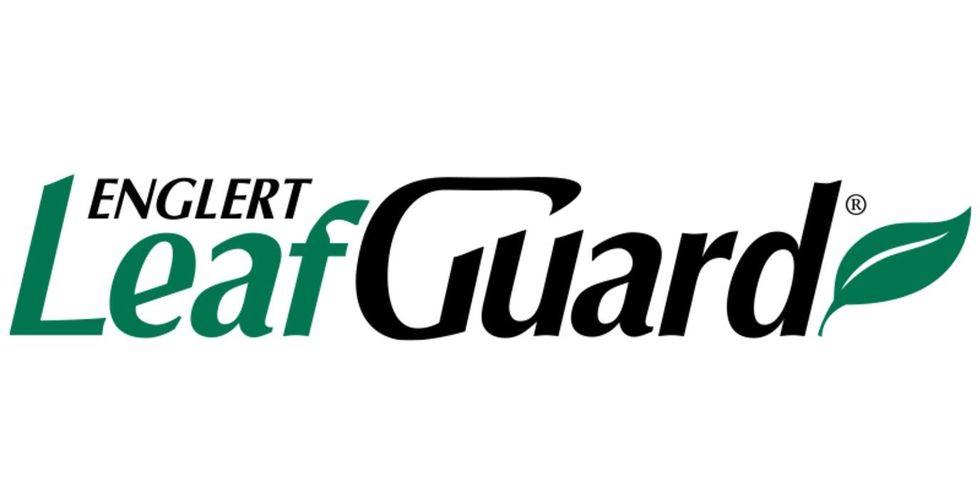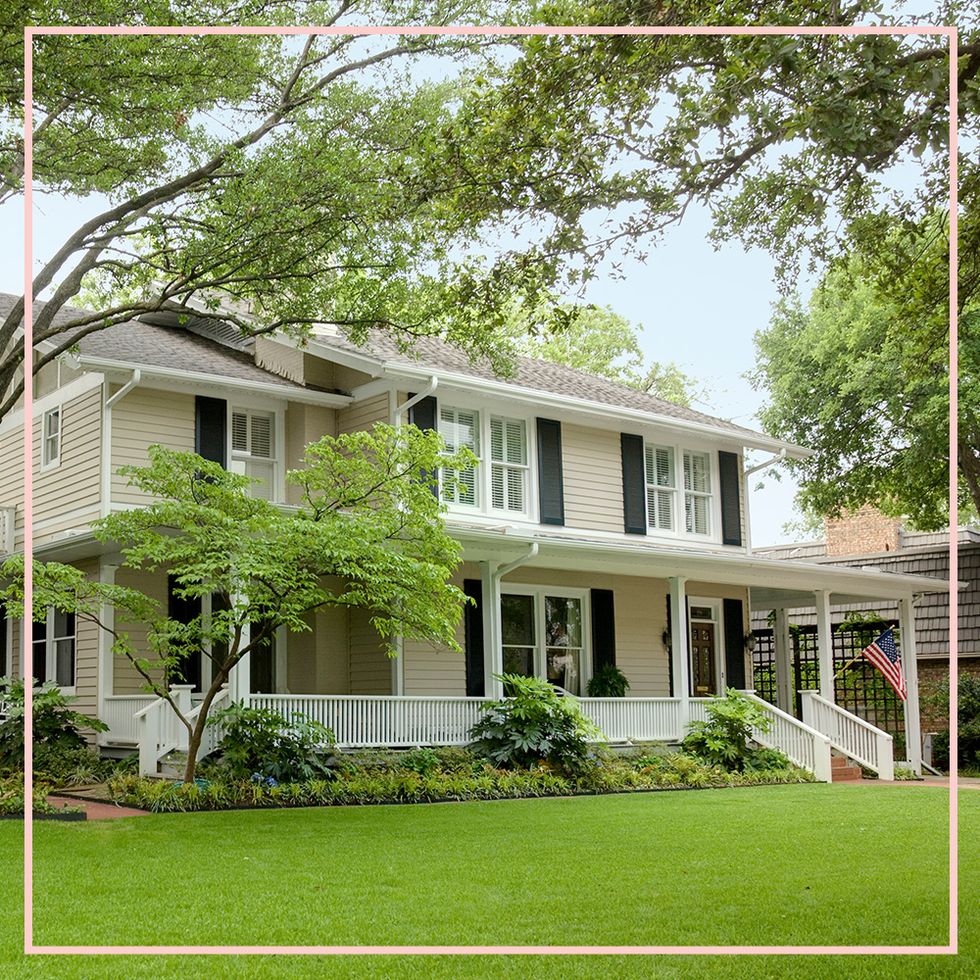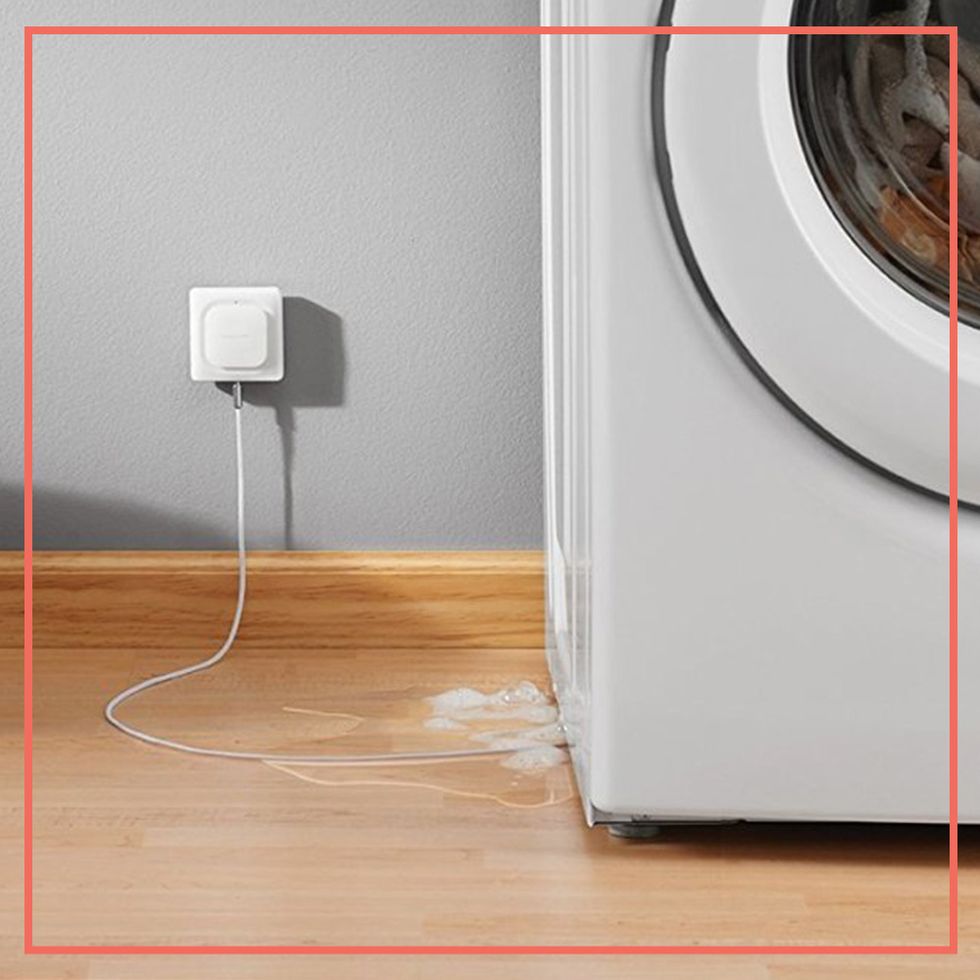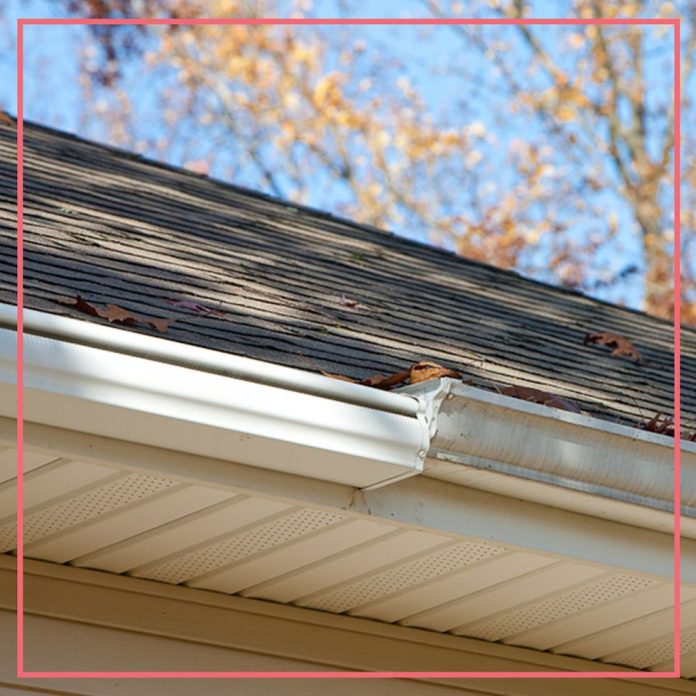- Replacing your gutters with a system that helps prevent clogs is one of the best ways to shield against water damage.
- Installing a sump pump, smart water sensors, and more will also help defend your home against water.
There’s usually more to a leaky bathtub than a puddle of water on the floor. When left untreated, even the smallest water damage can cause mold growth, water contamination, structural problems, damaged wiring, odors, stains — the list goes on and on.
But instead of crossing your fingers and hoping your home is leakproof, take action into your own hands: The best way to avoid water damage is to make sure it doesn’t happen in the first place. Not only are these ideas likely cheaper and easier than repairing water-damaged walls or floors, but they can increase the value of your home and keep all systems in working order for years to come.
Replace your gutters
Leafguard
Englert LeafGuard Gutters

Englert LeafGuard Gutters
“Clogged gutters allow water to spill over the sides, which can send water flowing down to the basement where it could do serious damage,” explains Craig Gjelsten, vice president of operations at Rainbow International Restoration. But instead of climbing up on a wobbly ladder multiple times a year to clean out leaves and bugs, replace your gutters altogether.
While there are a multitude of gutter systems and materials available — like open face versions, or ones with screens, mesh toppers, and hoods — Good Housekeeping recommends the ones from LeafGuard, a 15-year GH Seal Holder. Good Housekeeping Institute experts have rigorously tested LeafGuard’s one-piece, debris-shuddering system, which will save you from cleaning the gutters ever again, and helps prevent clogs from built-up debris to reduce your risk of water damage.
“LeafGuard gutters are curved and feature a built-in hood to keep out leaves, dirt, and other debris,” says Rachel Rothman, Chief Technologist at the Good Housekeeping Institute. “This unique patented design lets rain trickle in while everything else simply glides right over them and falls to the ground below.”
LeafGuard gutters are stronger and sturdier than other gutters on the market, and their scratch-guard finish helps prevent chipping, peeling, and cracking. Additionally, they are built to withstand harsh weather conditions and can handle up to a whopping 32 inches of rain per hour — way more capacity than you will ever need (that number is more than 3x the record rainfall ever recorded by the US Weather Bureau).
Be careful what and where you plant

Getty Images
Gjelsten explains that tree roots “can be incredibly invasive,” so it’s important to be aware of the location of underground pipes, septic tanks, and sprinkler lines before planting any large specimens close to your house. Roots can also cause damage to the foundation, which can lead to a bevy of problems, including water damage.
The maximum distance for a plant’s height is the same you should leave for the roots.
Blue Sky Plumbing lists a slew of popular plants that have root systems that could be problematic: willow, oak, magnolia, poplar, citrus and birch trees, as well as boxwood shrubs, holly bushes, and climbing varieties of ivy. If you’re considering any of these in your landscape, be sure to measure properly and plant the appropriate distance away from your home; the maximum distance for a plant’s height is the same you should leave for the roots.
Add smart home water sensors

Getty Images
Every washing machine hook-up has a manual valve that lets you turn off the water supply when you’re not using the appliance, but do you actually do that? Didn’t think so. Instead, deploy some simple smart home technology paired with an automatic valve control to shut off water to specific appliances, or the whole house if necessary. “These devices give you peace of mind and drastically reduce the chances of water damage to your home,” says Gjelsten.
In addition to detecting the presence of water, many of these sensors also detect changes in humidity and temperature — particularly helpful if you live in an area where pipe freezing is a concern. Wading into the world of home tech can be intimidating, but look for a sensor that is cordless, so it can be placed without needing an electrical outlet nearby. Here are Good Housekeeping’s top picks.
Install a sump pump
Basements are, naturally, the first place to flood when a big storm hits, so if you live in a rainy climate, invest in a sump pump to prevent basement flooding. These devices pump water rising up from the ground back to the outside so your basement and the rest of your home stays dry.
According to HomeAdvisor, the average cost to install a sump pump is $1,204. Keep in mind that’s a one-time fee. Without a sump pump, you could pay anywhere from $1,500 to $8,500 to drain, dry, and clean your basement every time it floods.
Upgrade to reinforced hoses
A super simple and cheap way to prevent water damage is to replace the supply hoses on your washing machine and dishwasher.
Gjelsten advises checking these hoses regularly “to make sure they’re not kinked, blistered, bulging or cracked. When they show signs of wear, replace your existing hoses with reinforced stainless steel versions, which are stronger and last longer than rubber or plastic hoses.”
Take good care of your pipes

Getty Images
Homeowners abuse their plumbing systems in ways they might not even realize. Gjelsten has four rules for keeping your pipes in top shape:
- Use a drain snake instead of unclogging chemicals when a sink starts to back up. Yes, reaching for the bottle of liquid cleaner is much easier (and way less gross) than using a snake, but that can can corrode pipes.
- Never pour grease or oil down the drain. You know how leftover oil congeals and hardens in the pan after you cook? That’s also what happens to it in your pipes.
- Set the thermostat to at least 60 degrees and open under-sink cabinet doors on cold nights. That way, warm air can circulate around pipes and help prevent them from freezing.
- Test your water pressure. High pressure can cause damage to pipe connections and result in blowouts in appliance supply lines, leading to flooding. You can buy a pressure gauge at your local hardware store for less than $15.
Be a leak detective

Getty Images
Early detection can help keep water damage to a minimum, so even if you have multiple water sensors installed throughout your home, it’s good to do a manual leak audit every few months.
Here’s Gjelsten’s method: “Examine your water bills and water meter: If you notice a sudden unexplained cost increase in your monthly bills, you could have a hidden leak. Go outside and read your water meter. Don’t use any water for two hours. Read the meter again. If it has moved, you’ve just confirmed you have a leak somewhere.”
Then, he says, go through your home and check everywhere possible for the leak. “Anything with water attached to it has the potential to leak. This includes sinks, toilets, tubs, showers, the ice maker, dishwasher, and washing machine.” Examine the fixtures and appliances for damaged rubber tubing or loose fittings, and check the surrounding area — including the ceilings and walls in rooms below bathrooms, kitchens, and laundry rooms — for water stains, cracked pipes, and mold.
www.goodhousekeeping.com
https://www.goodhousekeeping.com/home/renovation/a34096524/7-ways-to-prevent-water-damage-at-home/














